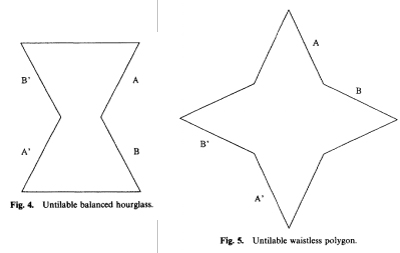I saw this problem some years ago, don't remember the source:
Let $P$ be a Jordan polygon (i.e. the only points of the plane belonging to two edges are the polygon vertices) that can be tiled with parallelograms.
- Does it follow that the sum of the areas of all the rectangles among those parallelograms is the same independent of the tiling?
- Does it follow that the sum of the areas of all parallelograms with angles $\alpha$ and $\beta$ is the same independent of the tiling?
I couldn't find a solution, but I believe the answer to both questions is positive.
Does anyone know how this problem can be solved?

